Wake up every morning with stiffness and aches due to uncomfortable tossing around overnight? Looking at your sagged bed, you start to think about how old is your mattress? It prevents you from getting a night of good sleep.
Sleeping problems may be responsible for daytime drowsiness and tiredness that closely related to deteriorating performances or even mistakes at school or work. In addition to particular medical conditions, most cases have blamed the bed as the main culprit.
Some issues like thickness, denseness, weightiness, improper and inadequate maintenance or mismatched foundations are more likely to speed up the impairment of your mattress. A question popped up in your head: How long has it been since your last change to your sleeping pad?
That one question sparks another long list of concerns such as:
“Why should you change your mattress?,”
“How often should you get a new mattress?,”
“When is the right time for replacing your old mattress?”,
“Do you need to buy new mattress?,”
“What extra care should you do to prolong your mattress lifespan?”,
and more.
Background explanations
Why should you replace mattress with a new one? Comfort is the first and most reason why you have to renew your mattress.
As time passes, it will gradually decline in function and start to uncomfortably sink. As a consequence, your chance to get nice, sound sleep is getting decreased.
Why you should change your old mattress can be attributed to the following reasons:
- Not only physical pains, but bad sleep can also cause a number of medical unhealthiness, like high blood pressure, heart disease, kidney disease, diabetes, and other serious illnesses.
- A mattress is a host for dust mites and other allergens that are harmful to those with an allergic reaction, asthma attack, and other respiratory disorders.
How often should you get a new mattress?
A mattress is comparable to a pair of running shoes. Depending on the quality, your care, and maintenance, they will provide more or less comfort and serves you with longer or shorter performances.
As for the mattress, the standard lifespan for replacing it with a new one is 7 to 10 years, and the most helpful one is around once every 8 years.
When is the right time to replace mattress with the new one?

Still referring to a good pair of running shoes that make you go faster and keep you away from injuries thus when your bed starts to worse in performance and prevents you from getting comfier and healthier sleep, it is the call for doing something with it.
It can require you to replace some of its parts or simply buy new a mattress. Look at the following signs that ask you to look for a new one:
- Symptoms of physical deterioration
Where you can immediately see and feel the sags, rips, chunks, or even coils through your bed fabric. - Squeaky springs
A sign that you need to replace the supporting coils since they are no longer able to provide the supposed comfy support. - Sore and stiff muscles
Many studies have revealed that by having a new and correct mattress will lessen your back pains and enhance your sleep quality. - You are aware that your bedmate tossing around
eteriorated mattress no longer can provide you with proper support or cushioning that functions to minimize the movement transitions. - Worse allergy reactions and respiratory disorders
When you start to have like skin rashes, asthma attack, breathing difficulties, some allergy-provoking agents, as well as bugs and dust mites, must have occupied your bed. When a regular cleaning and vacuuming have been done yet your symptoms exacerbating, it’s time to dispose of your mattress. - Signs of poor sleep quality
Some health issues caused by bad sleep are high blood pressure, anxiety, weight gain, depression, heart disease, and more severe illness.
Buy New Mattress – Some Considerations
If you happen to experience the above situations, it is perhaps the time to replace mattress with the new one, the better one. Before choosing and purchasing a new sleeping pad, check out for this helpful information first:
1. Types of Mattress
The mattress type you purchase will make a difference indeed. Read the following the details of mattress variations and features:
| Type | Description | Lifespan |
|---|---|---|
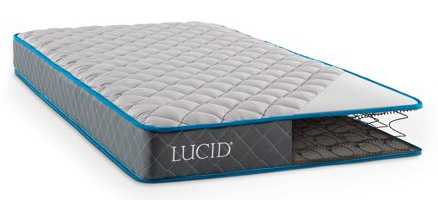 Innerspring | Distributing weight equally across the mattress thanks to its coil support systems | 10 years |
 Memory foam | Available in various kinds of materials and denseness options | 10 to 15 years |
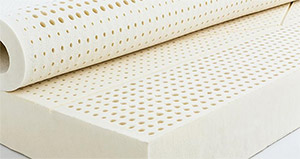 Latex | Available in a synthetic or organic selection with each different durability. | 20 to 25 years |
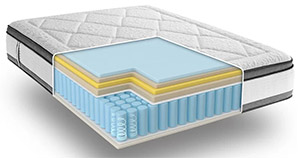 Hybrid | A fusion of foam and innerspring mattresses, containing a base layer foam, a coil support system, and a top layer foam | 6 years |
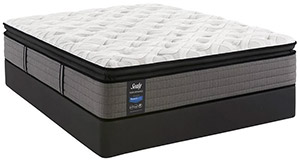 Pillow-top | A mattress with extra cushioning at the surface for additional softness and comfort. | 4 to 7 years |
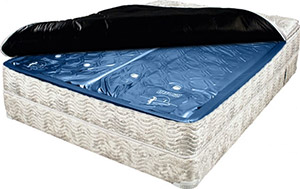 Waterbed | Available in: hard-side – a conventional form of vinyl waterbed mattress soft-side – are cased in a foam “box” and look similar to other common mattresses | 5 to 10 years |
2. The Firmness of A Mattress
Opt for a mattress that will lessen muscle pains and other uncomfortable post-sleep results. To provide relaxing or even healing padding support, a mattress is generally categorized into three based on their comfort and support features:
- A soft mattress, more likely to adapt to your body form but cannot provide uniform support across the whole body.
- Medium-firm mattress, more likely to offer support and comfort evenly, as well as relieve the pressure point of pain for most user.
- Ultra-firm mattress, supplies with the best support inclines to cause more pressure point of pain.
3. Sleep Position
Having a nice, good sleep means that your mattress provides you with a feature that is able in mitigating the pain’s pressures points thus you will have no aches in your back, spine, hips, or more muscle parts. It is also contributed by the position you sleep.
In case that you have to buy a new mattress, choose for the one that fits your certain favorite sleeping positions, especially related to the mattress firmness since it will serve to maintain your spine neutral. Check the tips as follows:
- Side sleeping position – people with this sleeping position preference commonly find a medium feel mattress as the comfiest.
- Back sleeping position – the people in this category mostly choose for a medium to medium-firm beds.
- Stomach sleeping position – these people have to consider medium-firm to firm mattresses.
4. A Perfect Fit From the Start
From the first time you try to sleep on your mattress, it is just perfectly fit. The time you usually take adjust to your new sleeping pad is at least one month.
During this period, your body will remember the comfiest point on that sleeping surface. By this adjustment, you may have your natural testing in choosing and picking the fittest one for you.
5. No Tossing and Turning
Since we roll over for about 75 times per night.
Your new mattress should have some good features of relieving the pain pressuring points and also lessening the tension and stress, particularly on your spine and joints. It should allow you for better, soothing sleep.
6. Price and Guarantee
Price of a brand new mattress can vary, so pick make sure to pick one that best suit your budget.
Mattress warranty is not merely referring to the life expectancy of the mattress, but it is more about the materials and craftsmanship, as well as a case of mending or substitution.
Some Extra Care
When you finally replace mattress with a new one, you have to apply additional and proper care and maintenance thus it will grant you with its full benefits. Some of those extra care are:
- Check that your mattress has the matched box spring as the supporting foundation.
- Cover your sleeping surface with a mattress protector to prevent any spillage, dust or debris from make it worse.
- Flip your mattress every 3 to 6 months to distribute the wear evenly and also to maintain its good condition.
- Regular cleaning and vacuuming as instructed by the mattress manufacturer. This will at least get rid the dust mites, and other allergy-provoking agents, as well as spot cleanse.
- Provide better airing system by opening your windows on a regular basis so that the dust and moist accumulation will be reduced.
- Let your mattress breathe by changing your bed sheets and covers regularly.
If we are lucky, we can snooze for about 8 to 9 hours per day. And spending that time on a bad or deteriorating sleeping pad would be a disaster.
Therefore, if you are suffering from constant pains from your saggy bed, buy new mattress can improve your sleep, as well as your health.
